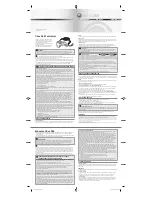
NHRC-10 User Guide
Page 12
Copyright
1999, 2000, 2001 NHRC LLC. All Rights Reserved.
2.9 Audio Level Adjustment
Description of Audio Processing:
The NHRC-10 uses analog switching and audio mixing to route audio from audio sources
to the transmitter ports, voice recorder and phone patch.
The controller has two internal mix busses that supply audio to the various outputs. The
transmitter mix bus supplies audio to the main and remote base transmitters. The phone
mix bus supplies audio to the telephone line. Each mix bus has a variety of audio sources.
Each audio path through the controller is described in detail below.
The main receiver’s audio is passed into the controller through potentiometer VR5, and
then buffered through audio amplifier U1A for impedance isolation and equalization. This
amplifier can be set up to provide flat audio response or 6 dB/octave de-emphasis with a
roll-off of approximately 250 Hz, allowing the use of discriminator audio. The buffered
audio is then passed to touch-tone decoder U12, and through connector J3 to the
optional
digital audio delay board for squelch tail elimination. If the digital audio delay is not
present, J3 pins 2 and 3 must be jumpered to allow audio to continue to pass through the
controller. After the digital audio delay connector, the main receiver audio is gated
through analog switch U3A. The gated audio is supplied to the transmitter mix bus via ,
potentiometer VR7, the phone mix bus via potentiometer VR9, and into the digital voice
recorder (DVR) chip via potentiometer VR11.
The remote base receiver’s audio is passed into the controller through potentiometerVR1,
and then buffered and equalized through audio amplifier U1D, identically to the main
receiver audio. The buffered audio is presented to J4 for the remote base receiver’s
optional
digital audio delay board. If the digital audio delay is not present, J4 pins 2 and 3
must be jumpered to allow audio to continue to pass through the controller. Remote base
audio is gated through analog switch U3B, directly onto the transmitter mix bus.
Flat or de-emphasized audio on the main and remote base ports is simply selected by
moving the shorting jumpers from (N) normal position to (D) de-emphasized position.
Note if the jumper is completely removed the audio processing circuit will provide
approximately a 10X audio gain with flat response.
DTMF and courtesy tones are generated by tone generator U14, buffered by amplifier
U2A, and provided to the phone mix bus at a fixed level. The buffered tones are also
provided to the transmitter mix bus through potentiometer VR6, buffer amplifier U1B, and
analog switch U3C.
DVR output is buffered by amplifier U2B and provided to the phone mix bus. The
buffered DVR output is also provided to the transmitter mix bus via potentiometer VR10,
and through amplifier U1B and analog switch U3C, which are shared with the DTMF and
courtesy tone generator.
Phone audio is provided to the transmitter audio mix bus through potentiometer VR2,
buffer amplifier U1C, and analog switch U3D.
















































